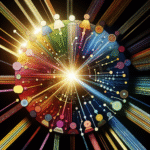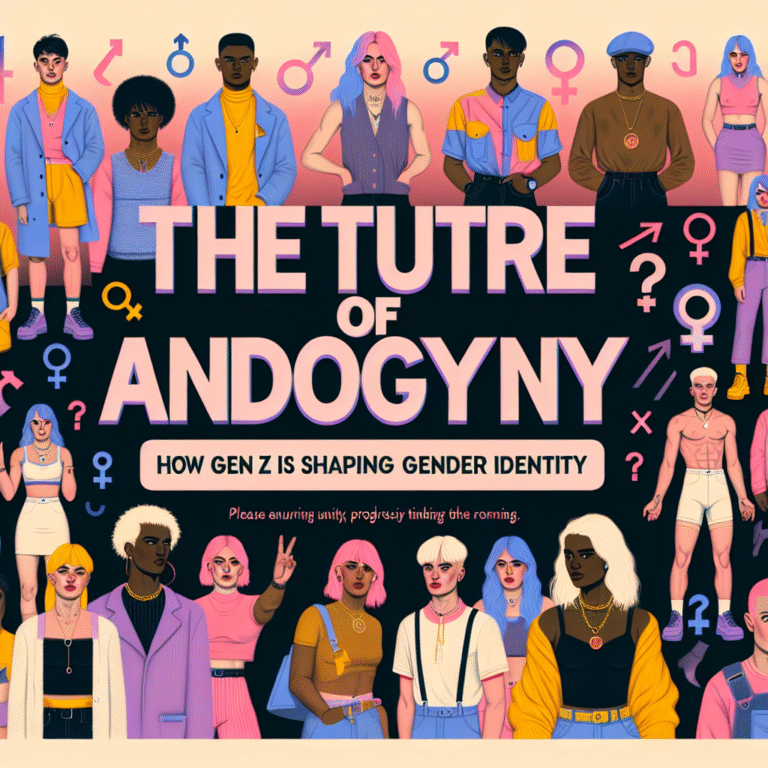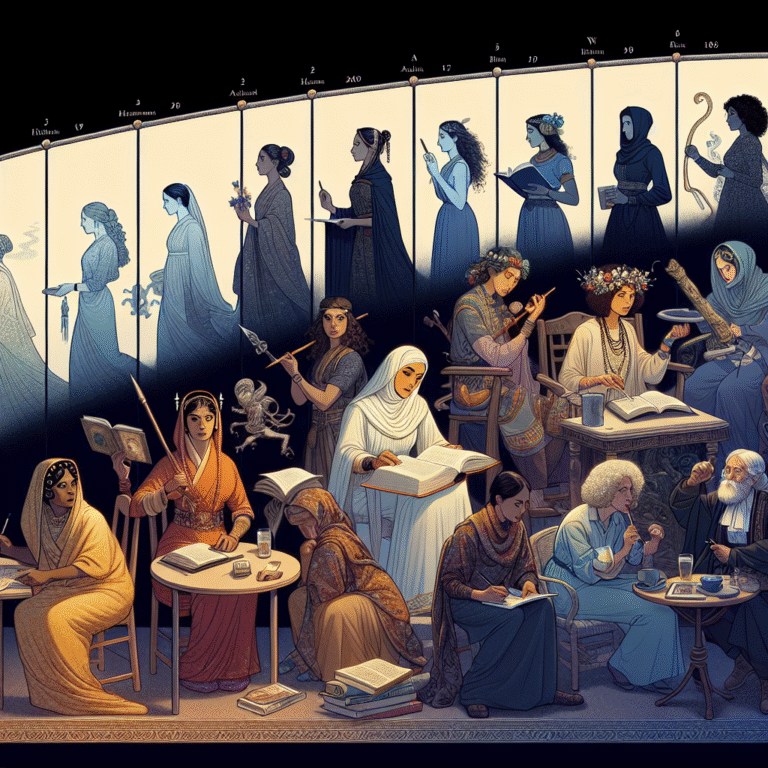
Introduction
In a world that increasingly embraces diversity, androgyny has emerged as not just a fashion statement, but a profound artistic expression that disrupts conventional norms and celebrates ambiguity. The concept of "Androgyny as Art: Celebrating Ambiguity in Contemporary Photography and Design" invites us to delve deeper into how contemporary artists and designers challenge gender binaries through innovative visual narratives. This exploration transcends aesthetics, opening a conversation about identity, society, and the power of ambiguity in creative expression.
The Evolution of Androgyny in Art
Historical Context
Androgyny has a rich history that stretches back centuries, appearing in countless cultures and artistic movements. From the ancient Greeks, who celebrated the androgynous forms in sculptures, to the Renaissance period, where ambiguous figures depicted deeper philosophical ideas, androgyny has been an essential ingredient in the evolution of art.
The 20th century witnessed a renewed interest in androgyny, particularly in the realms of fashion and photography. Artists such as Claude Cahun and Man Ray played pivotal roles, employing androgynous subjects to challenge gender norms and provoke thought.
Contemporary Reflections
Today’s artists utilize androgyny to reflect on the complexities of identity in a globalized, digital age. Photographers and designers alike have adopted this theme, creating works that resonate with a generation eager to explore fluidity and diversity.
One notable case study is the renowned photographer Anastasia Taran, whose series "Gender Bender" explores the gender spectrum through captivating portraits. Taran’s work invites viewers to confront their perceptions and redefine their understanding of gender.
| Artist | Work | Themes |
|---|---|---|
| Claude Cahun | Various Self-Portraits | Identity, Gender Fluidity |
| Man Ray | Androgynous Portraits | Surrealism, Ambiguity |
| Anastasia Taran | Gender Bender | Spectrum of Gender |
Analyzing Ambiguity in Contemporary Photography
Breaking Gender Norms
The power of androgyny in art lies in its ability to challenge societal expectations. Photographers today use androgynous subjects to confront the rigid binaries of male and female, urging viewers to reconsider stereotypes. This transformation is vital, as it reflects ongoing dialogues about gender identity and acceptance.
Case Studies in Photography
An outstanding example is the work of Tyler Mitchell, the first African American to shoot a Vogue cover. His photography often blurs gender lines, presenting his subjects in a manner that defies traditional categorizations. This approach not only celebrates individuality but also invites a broader discourse on the intersections of race, gender, and sexuality in contemporary art.
Moreover, the campaign "Unisex" by the fashion brand EXCLUSIVE highlights this exploration. Featuring models with ambiguous styling, EXCLUSIVE’s promotional images spark conversations about androgyny’s role in fashion and identity.
| Photographer | Work | Impact |
|---|---|---|
| Tyler Mitchell | Vogue Cover | Challenged Race and Gender Norms |
| EXCLUSIVE Campaign | Unisex Fashion | Provoked Discourse on Identity |
Design: The Ambiguity of Form and Function
Blurring Lines in Fashion
In contemporary design, androgyny has become a powerful tool for redefining fashion. Designers like Comme des Garçons and Yohji Yamamoto have pioneered collections that transcend gendered clothing, promoting a vision where anyone can wear what resonates with them.
The essence of "Androgyny as Art: Celebrating Ambiguity in Contemporary Photography and Design" can also be seen in the aesthetics of minimalism, where the focus shifts from conventional gender presentation to the essence of the garment itself. By emphasizing fluid lines and neutral colors, these designers invite consumers to rethink their wardrobe choices.
Case Study: The Androgynous Runway
A landmark moment occurred during the Spring/Summer 2021 Paris Fashion Week, where multiple designers showcased androgynous collections. Notable was the debut collection by Khaite, which spiritfully mixed tailored suits with flowing fabrics—symbols of empowerment regardless of gender.
| Designer | Collection | Design Elements |
|---|---|---|
| Comme des Garçons | Androgynous Line | Genderless Fits |
| Khaite | Spring/Summer 2021 | Tailored Meets Fluid |
Impact on Cultural Identity and Society
The Symbolism of Androgyny
Androgyny is not just a visual choice but also a cultural statement. As societies grapple with evolving norms surrounding gender and identity, androgynous art serves as a powerful symbol of acceptance and inclusivity.
For instance, the rise of gender-neutral fashion brands like Telfar has not only challenged traditional gendered marketing but also made strides in providing accessible clothing that reflects broader societal shifts towards self-expression.
Case Study: Telfar
Telfar Clemens, a designer known for advocating for inclusivity, offers collections that are both visually stunning and deeply resonant with those seeking representation. Telfar’s motto, "It’s not for you—it’s for everyone," conveys a message of unity, showing how androgyny in design can foster a sense of community among diverse audiences.
| Brand | Designer | Mission Statement |
|---|---|---|
| Telfar | Telfar Clemens | "It’s not for you—it’s for everyone" |
The Role of Social Media in Promoting Androgyny
Visual Platforms as Catalysts
Social media platforms like Instagram and TikTok have become pivotal in promoting androgynous art. These platforms allow artists, photographers, and designers to share their work widely, breaking traditional barriers that once restricted artistic expression.
Case Study: Influencers
Influencers such as Harris Reed leverage their platforms to promote androgyny, showcasing their bold designs and challenging beauty standards. Reed’s collaborations have not only highlighted the importance of fluidity in fashion but have also empowered followers to express their individuality.
| Influencer | Focus Area | Notable Collaborations |
|---|---|---|
| Harris Reed | Androgynous Fashion | Collaborations with major brands |
Celebrating Ambiguity: A Community Approach
Art and Collaboration
The celebration of ambiguity in art can flourish within community initiatives. Programs designed to nurture androgynous artists and promote inclusivity are essential for fostering diverse voices. Local art collectives, exhibitions, and workshops can provide platforms for emerging talent to express themselves freely.
Example: Local Art Initiatives
For example, galleries hosting exhibitions focused on gender fluidity and showcasing androgynous artists create spaces for dialogue and understanding. Such initiatives not only celebrate diversity but also educate viewers on the significance of androgyny in contemporary culture.
| Event | Location | Outcome |
|---|---|---|
| Gender Blender Exhibit | Local Art Space | Showcased diverse perspectives on identity |
Conclusion
"Androgyny as Art: Celebrating Ambiguity in Contemporary Photography and Design" is not merely a trend but a movement that resonates deeply within modern society. As we continue to explore and celebrate ambiguity, we open doors to greater understanding and acceptance of diverse identities.
Artists, designers, and photographers play a critical role in this journey, pushing boundaries and redefining standards. Let us recognize the power of androgyny—and embrace it—encouraging ourselves and others to challenge perceptions and celebrate uniqueness.
FAQs
1. What is androgyny in art?
Androgyny in art refers to the blending of male and female characteristics in artistic representations, creating works that challenge traditional gender roles and celebrate fluidity.
2. How does androgyny influence contemporary design?
Androgyny influences contemporary design by promoting gender-neutral clothing and challenging the binary view of fashion, opening up new avenues for personal expression.
3. Who are key artists focusing on androgyny today?
Notable contemporary artists include Tyler Mitchell, Anastasia Taran, and Harris Reed, each contributing unique perspectives on gender through their work.
4. Why is androgyny important in today’s society?
Androgyny is important as it promotes inclusivity and acceptance in a society where traditional gender norms are increasingly questioned, fostering dialogue and understanding about identity.
5. How can I support androgynous artists?
You can support androgynous artists by attending local exhibitions, following them on social media, purchasing their work, and spreading awareness about their contributions to the art world.
In summary, let us not only celebrate androgyny as an art form but also recognize its ability to unite us in our shared humanity. By appreciating ambiguity, we celebrate the richness of our diverse identities.
















